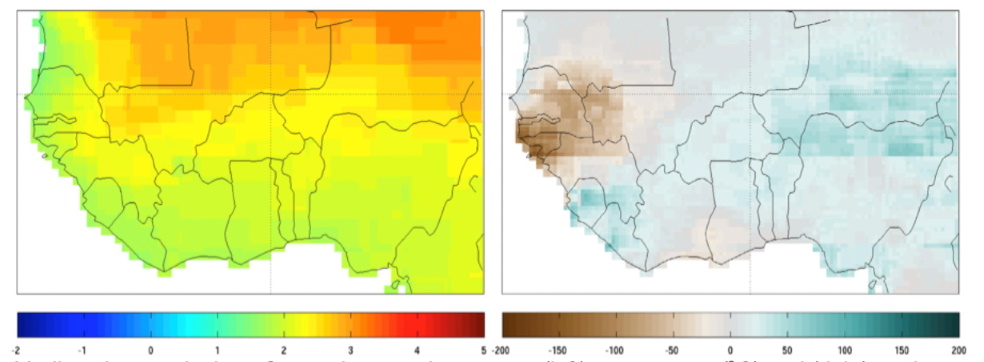The national adaptation planning framework in Ghana aims at addressing climate change impacts in key sectors of the economy such as agriculture in a coordinated and sustainable manner. The AgMIP regional integrated assessment (RIA) framework provides an approach that addresses this aim. The RIA was applied to smallholder systems in Navrongo and then linked to the national level through government policies in the agriculture sector and other allied sectors to assess climate change adaptation under plausible agricultural development trajectories.
Climate
Historical data for Ghana from the year 1961 to 2000 clearly shows a progressive rise in temperature and decrease in mean annual rainfall across the country. The average annual temperature has increased by 1°C in the last 30 years. Delayed onset of the season, erratic rainfall pattern, long drought spells and floods are increasing features on the agriculture landscape. It is projected that temperatures will continue to increase, while changes in the direction of rainfall amounts is uncertain across the country.

Economy
Climate change impacts Ghana’s economy where agriculture contributes 54 % of Ghana’s GDP, and accounts for over 40 % of export earnings, and provides over 90 % of the food needs of the country. Agriculture also engages about 52 % of the labour force where it is predominantly smallholder, subsistence and rain-fed thus vulnerable to climate variability and change.
Agricultural production systems
Adaptation and mitigation
The task is to advance strategies for climate change impacts in agriculture that are consistent with ensuring food security, sustaining rural livelihoods and protecting the environment.
Agricultural production
Ghana’s farming systems vary across the country based on agro-ecological zones. In the forest zone, tree crops are central with cocoa, oil palm, coffee and rubber dominating and are grown as cash crops. The food crops in this area are mainly inter-cropped mixtures of maize, plantain, cocoyam and cassava. The middle belt is characterized by mixed or sole cropping of maize, legumes, cocoyam or yam, with tobacco and cotton being the predominant cash crops. Cotton and tobacco are also important in the northern sector, where the food crops are mainly sorghum, maize, millet, cowpeas, groundnuts and yam. Rice is important in all the zones. Livestock production is a major feature in Ghana’s agriculture landscape. Domestic livestock meat and milk production amounted to 66,283 metric tons and 13,700 metric tons respectively in the year 2000.






